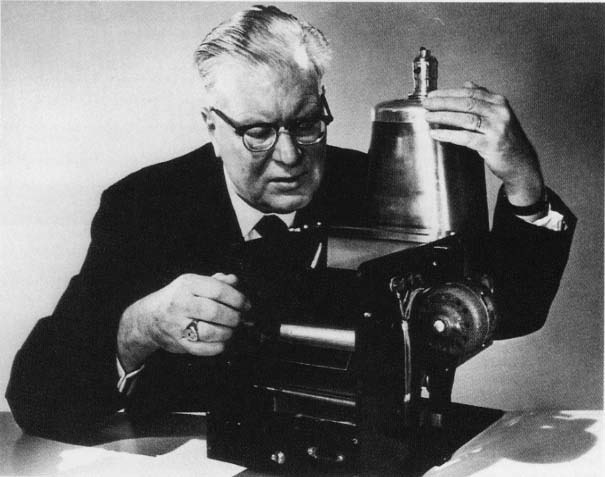“There are no secrets to success. Don’t waste time looking for them. Success is the result of hard work, learning from failure, and persistence.” Colin Powell
August 1938 – Queens, New York: It wasn’t the first time that Chester had an experiment go awry in the small kitchen, but it would be the last. Elsa Carlson had had enough. She yelled at her young husband, “Chester, I can’t take this anymore! You know I support you, but either your experiments go, or I go. It’s up to you.” Chester had never seen her that angry.
For almost a year, Chester Carlson and his assistant Otto Kornei, an unemployed physicist, had been conducting experiments in the kitchen of the Carlson’s small apartment. Chester was obsessed with the idea of a new kind of dry printing.
After several failed experiments, a couple of kitchen fires, and a furious wife, Chester got the message. A month later, he rented an 8×10 office, which he converted into a lab. He knew they were close to success.
On the morning of October 22, Kornei wrote in India ink on a microscope glass slide, “10-22-38 ASTORIA” (the date and name of the neighborhood). When the slide was placed on a sulfur-coated zinc plate and exposed to a bright light, an image of the original appeared on the plate. They stared at each other and then conducted another experiment to confirm their finding. They went out to lunch to celebrate. They had finally done it!
Chester Carlson, the son of a barber, had worked his way through Riverside Community College and the California Institute of Technology, earning a degree in physics in 1930. With Depression-era jobs scarce, he applied to 82 companies before finally landing a $35-a-week position with Bell Laboratories in New York.
After earning a law degree at night from New York Law School, Carlson joined P.R. Mallory, an electronics firm, and was eventually promoted to head of the patent department. He grew frustrated that there never seemed to be enough carbon copies of patent specifications. The choices were expensive photographs of the documents, rewriting, or retyping the lengthy documents.
Carlson decided to look for a solution to his copy problem. He spent his evenings at the New York Public Library reading all he could find about imaging processes. Then he and Kornei began trials in his apartment kitchen. He filed for a patent on April 4, 1939. By then, Carlson had moved his lab to a small room on the second floor of a warehouse a few miles away.
By the summer of 1944, Carlson was frustrated and ready to quit. During the five years since filing the patent, he had pitched his invention to more than 20 companies, including IBM, RCA, General Electric, and Eastman Kodak, only to be rejected each time. Even the National Inventors Council snubbed his idea. The scientists who visited his small lab were unsure whether the invention was theoretically possible.
Finally, in late 1944, Battelle Memorial Institute, a non-profit technology group in Ohio, signed a royalty agreement with Carlson. Three years later, Battelle signed a deal with Haloid, a small photo paper copy company in Rochester, New York, to develop and build the copy machines. Carlson quit his job as a patent attorney to become a consultant to Haloid, which was struggling to market the unusual invention.
It took Haloid five years to develop a commercial copy machine. In 1949, they shipped the first photocopier, the Xerox Model A Copier, but the device proved to be a dismal failure. It was too difficult to use, requiring 39 manual steps to make a copy.
A decade later, in March 1959, and two decades after Carlson’s patent filing, Haloid (later to become Xerox) produced the 914 Copier, the first commercial office copier. The product was a phenomenal success. In the first eight months of production, Haloid sold more copiers than it had expected to sell during the product’s life cycle.
Chester Carlson’s copy machine has been dubbed the most significant breakthrough in communication since German Johannes Gutenberg’s invention of the printing press in 1450. Fortune Magazine termed it, “the most successful product ever marketed in America.”
Looking back on 20 years of trials and tribulations, Chester Carlson reminisced, “The years went by without a serious nibble. I knew that I had an idea by the tail, but could I tame it? There were numerous occasions when I became discouraged and plenty of times that I decided to drop the idea completely. But each time I returned to try again. I was convinced that the invention was too promising to drop it.”
